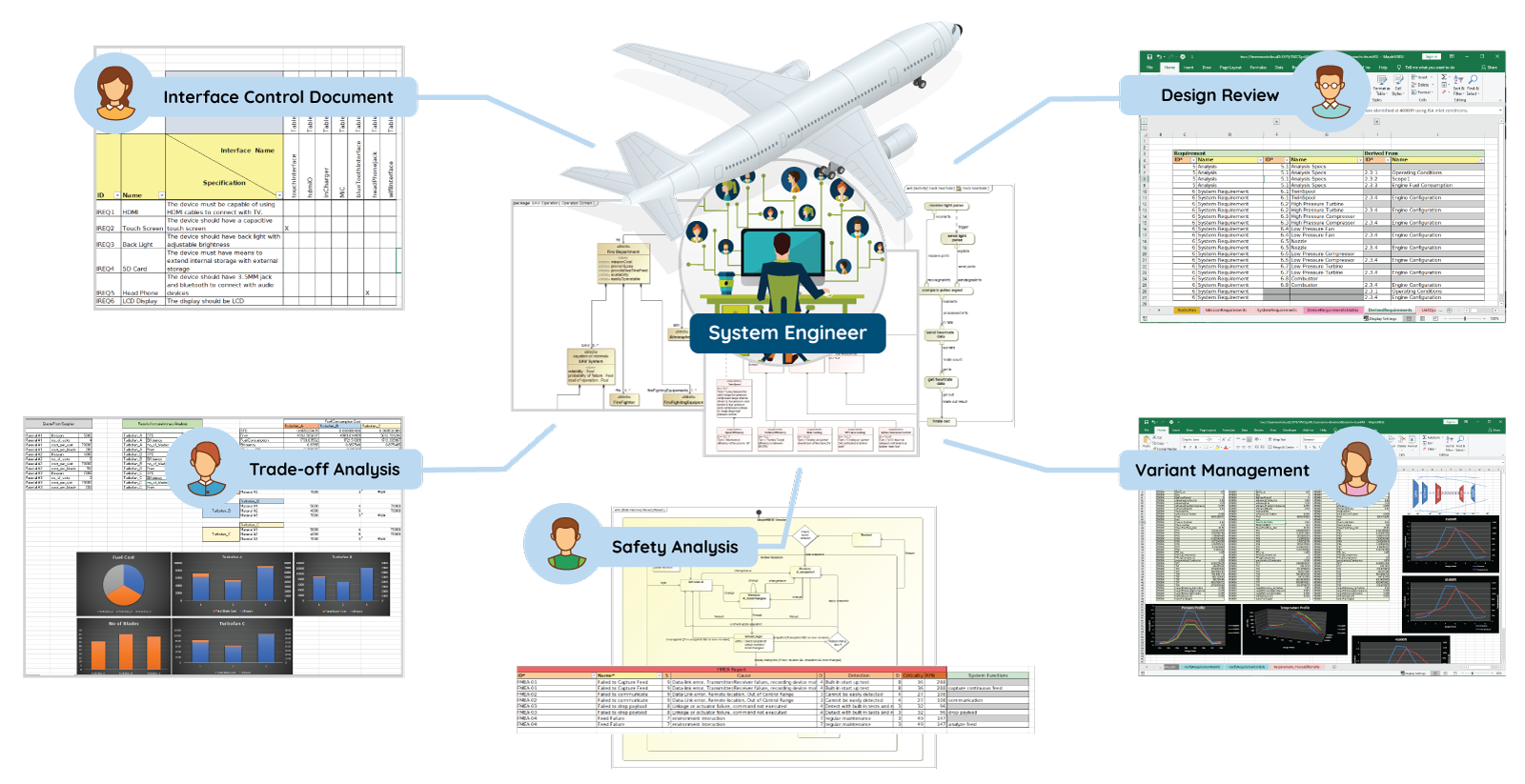
Complexity is increasing across today's development processes. Systems engineering can help mitigate these risks. Model-based systems engineering (MBSE) is a key methodology.
An MBSE approach to development allows engineers to define, manage, and track a single, unambiguous source of the truth for a system. This definition aligns development participants, because all stakeholders access and participate in the process. Providing a spreadsheet interface connected to the MBSE model allows non-expert people across the company to get involved early, and stay involved throughout the development process.
But getting the most out of systems engineering requires more than installing software. It requires process changes, new roles and responsibilities, and getting everyone in the company on the same page. This is often a challenging time, as knowledge workers must adopt new skills and working practices.
This publication offers guidance on how best to approach systems engineering and implement an MBSE approach, allowing companies to realize its value-added benefits faster.
Pursue the Vision in Short-Term Projects
When implementing systems engineering, organizations must start by defining a vision for the initiative. The vision should include a clear picture of how each role will perform their responsibilities in a larger process. Furthermore, it must include the advantages and benefits of working in a new way compared to today. Defining this end state drives high-level alignment for everyone in the organization.
Effective communication of the vision is vital. This is true especially during the early stages, when buy-in is paramount. It helps drive alignment across the business, not only among expert-level systems engineers, but among all the other participants involved in the project. Getting all stakeholders involved in the systems engineering initiative is key; systems engineers working in isolation will not deliver strong value to the company.
With a vision defined, it is important to break down this master plan into short-term, achievable projects that deliver value in manageable chunks. This allows the organization to realize initial benefits without a long wait. Participants and stakeholders see that the effort has rewards. This fosters continuing buy-in to the initiative across its lifecycle.
An initial unveiling of the initiative, however, is not enough. Ongoing communication is vital. Regular updates reinforce the overall vision, as well as short-term projects being pursued at the current time. This helps organizations build and maintain momentum, leading to success.
Gaining Alignment with Leaders
Getting value from a systems engineering initiative requires more than vision and an adoption plan composed of short-term, discrete stages. It also requires leadership. Realizing success demands navigating the politics of engineering organizations. It is critical to understand the interests of each type of leader in the context of a systems engineering initiative.
With any type of initiative, it is important for the initiative leader to recognize and support the functional leader. If an organization realizes the goals of the initiative at the expense of the operation of functional teams, conflict will ensue. This can have a negative impact on the initiative and the wider business, causing both productivity and morale to suffer. So, any defined short-term stages must be reasonable and aligned with the goals of the functional leader. Addressing the needs and concerns of both leaders allows the initiative leader to realize some objectives while supporting the functional leader's goals.

An example of collaboration within an MBSE framework. By using tools such as MapleMBSE, different stakeholders can use simplified, task-specific interfaces to contribute to the overall systems model.
Get the Right Enablers in Place
Organizations must take a robust approach to realize the true value of any systems engineering initiative. This approach involves getting the right roles defined, finding the right personnel, company-wide participation, clear process definitions, and the right metrics.
No systems engineering effort will find success without a team of skilled systems engineers. Organizations must hire, train, and empower their systems engineers to do their jobs. Only in this way can they ensure the level of expertise to meet today's aggressive project requirements. Organizations also need the right tools for systems engineers. The implementation of an effective MBSE system is the first major step towards success with a systems engineering initiative.
Another crucial enabler for success is company-wide participation in the process. To achieve this often-overlooked component , organizations must provide the right collaboration tools to democratize access to their MBSE models. These tools include spreadsheet interfaces that connect to MBSE models, which empower non-technical participants without overburdening them with complex modeling tools.
Armed with the right tools, organizations must clearly document and communicate the sequence of events during a systems engineering initiative. If everyone understands their roles, they can meet their responsibilities in a timely fashion. Keeping everyone informed prevents costly delays and streamlines the entire systems engineering initiative.
Another, often neglected, enabler is the integration and use of key metrics. This is a vital step, because clear metrics provide clear insights into the initiative. Leadership teams then can optimize their processes, people, and technologies to realize the full benefits of systems engineering and communicate these with the wider business.
Summary and Recommendations